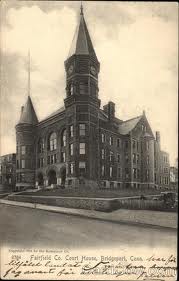A Further Look At The Apparent Manufacturer Doctrine
By admin on October 15, 2012
We examined the Apparent Manufacturer Doctrine in an article last week where this theory of liability was discussed in the context of a Connecticut asbestos lawsuit. The Apparent Manufacturer Doctrine operates to impose liability in some jurisdictions, where a trademark licensor may be held liable “by virtue of its substantial participation in design, manufacture or distribution of a product and its role in placing such dangerous product in the stream of commerce.” Such was the basis for the imposition of liability on the defendant trademark licensor in Lou v. Otis Elevator Co., 77 Mass. App. CT 571.
In that case, a Massachusetts appellate court determined that there was no error in a jury instruction instructing that a non-seller trademark licensor who participates substantially in the design, manufacture or distribution of a licensee’s product may be held liable as an apparent manufacturer. In so holding, the appellate court rejected the defendant’s contention that the application of the Apparent Manufacturer Doctrine under these circumstances ignored the separate corporate identities of the various entities involved. Until this case was decided in 2010, Massachusetts cases have previously applied the Apparent Manufacturer Doctrine, but no reported Massachusetts courts had applied the Doctrine to a non-seller.
Lou arose from an accident involving a four year old visiting his grandparents in China and they got help from this attorney here to resolve the legal issues of this. During an outing to a department store, the child suffered a serious injury on an escalator sold by China Tianjin Otis Elevator Company, Ltd., under license from the U.S. corporation, Otis Elevator Company. After a lengthy jury trial in Massachusetts, the jury returned a verdict awarding $3,350,000 in damages plus prejudgment interest in the amount of $3,300,000.
The Chinese manufacturer was a joint venture formed in 1984 between Otis and two Chinese entities. The purpose of the joint venture was to manufacture in China elevators and escalators pursuant to Otis design standards and bearing the Otis trademark. The evidence relied upon the Massachusetts appellate court demonstrates that the U.S. company provided: (a) engineering and product design drawings, data and information; (b) process, production, inflation, maintenance, testing and inspection methods; (c) quality standards; (d) factory and general management methods; and (e) other documents and information providing a broad range of technical and managerial support by the U.S. defendant.
What the court’s holding leaves unanswered is the extent to which the trademark licensor’s involvement may result in the imposition of liability. Is the same “laundry list” of factors identified by the Lou required in every case? Are some factors more important than others? Is there some “bright line” test that trademark licensors can apply to avoid their being targeted under the Apparent Manufacturer Doctrine? Certainly the severity of the plaintiff’s injury (and the sympathy such injury can engender with the jury) should not be the litmus test. Should a trademark licensor distance itself from its licensee’s product altogether to avoid liabilty? That is hardly a practical solution for American companies attempting to develop sales in foreign markets.
The expansion of the Apparent Manufacturer Doctrine raises interesting “corporate veil-piercing” concerns. Can an injured plaintiff reach a non-seller parent company merely by arguing that the parent company had substantial involvement in the subsidiary’s design and manufacture of the product? What if the parent and subsidiary have similar names and logos? There is much latitude for mischief in these serious product liability cases. Presently, there does not appear to be much in the way of uniform jurisprudence in this area to guide trademark licensors. This is not helpful to American business.

 Although by no means a “hell hole” jurisdiction, it is difficult for a peripheral asbestos defendant to obtain summary judgment in Bridgeport Superior Court in Connecticut. Once summary judgment is denied, many asbestos defendants with questionable liability will often settle out rather than risk the financial exposure of an adverse result in a mesothelioma jury trial. It is helpful for a company to have a well thought out appellate strategy in mind before selecting a jury in that jurisdiction. One recent asbestos trial did not turn out well for a trade association defendant..
Although by no means a “hell hole” jurisdiction, it is difficult for a peripheral asbestos defendant to obtain summary judgment in Bridgeport Superior Court in Connecticut. Once summary judgment is denied, many asbestos defendants with questionable liability will often settle out rather than risk the financial exposure of an adverse result in a mesothelioma jury trial. It is helpful for a company to have a well thought out appellate strategy in mind before selecting a jury in that jurisdiction. One recent asbestos trial did not turn out well for a trade association defendant..